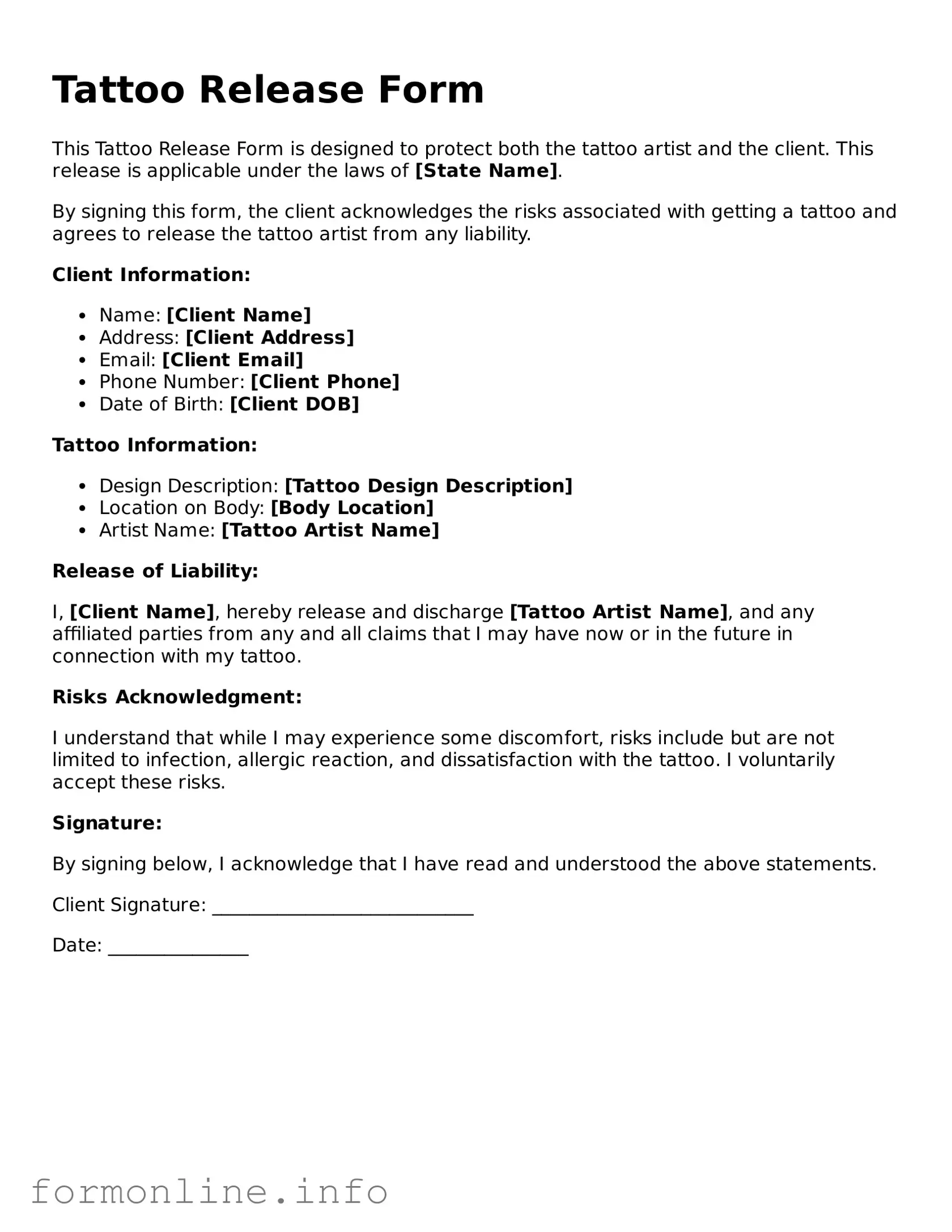Tattoo Release Form
This Tattoo Release Form is designed to protect both the tattoo artist and the client. This release is applicable under the laws of [State Name].
By signing this form, the client acknowledges the risks associated with getting a tattoo and agrees to release the tattoo artist from any liability.
Client Information:
- Name: [Client Name]
- Address: [Client Address]
- Email: [Client Email]
- Phone Number: [Client Phone]
- Date of Birth: [Client DOB]
Tattoo Information:
- Design Description: [Tattoo Design Description]
- Location on Body: [Body Location]
- Artist Name: [Tattoo Artist Name]
Release of Liability:
I, [Client Name], hereby release and discharge [Tattoo Artist Name], and any affiliated parties from any and all claims that I may have now or in the future in connection with my tattoo.
Risks Acknowledgment:
I understand that while I may experience some discomfort, risks include but are not limited to infection, allergic reaction, and dissatisfaction with the tattoo. I voluntarily accept these risks.
Signature:
By signing below, I acknowledge that I have read and understood the above statements.
Client Signature: ____________________________
Date: _______________
